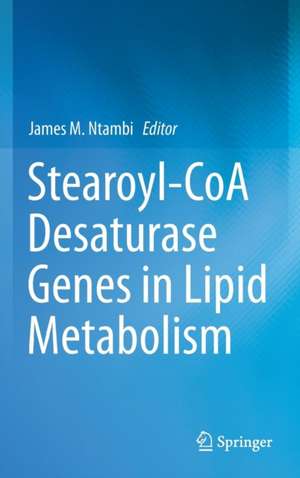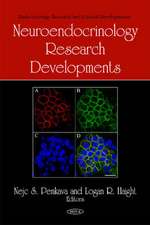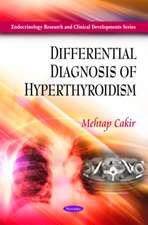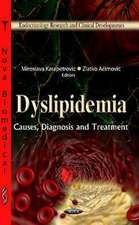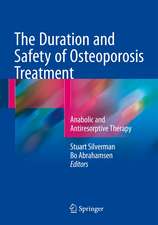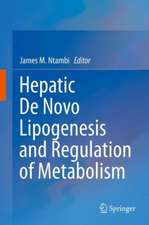Stearoyl-CoA Desaturase Genes in Lipid Metabolism
Editat de James M. Ntambi, Ph.D.en Limba Engleză Hardback – 13 aug 2013
| Toate formatele și edițiile | Preț | Express |
|---|---|---|
| Paperback (1) | 1091.85 lei 6-8 săpt. | |
| Springer – 22 aug 2015 | 1091.85 lei 6-8 săpt. | |
| Hardback (1) | 1096.62 lei 6-8 săpt. | |
| Springer – 13 aug 2013 | 1096.62 lei 6-8 săpt. |
Preț: 1096.62 lei
Preț vechi: 1154.34 lei
-5% Nou
Puncte Express: 1645
Preț estimativ în valută:
209.83€ • 219.67$ • 173.63£
209.83€ • 219.67$ • 173.63£
Carte tipărită la comandă
Livrare economică 05-19 aprilie
Preluare comenzi: 021 569.72.76
Specificații
ISBN-13: 9781461479680
ISBN-10: 1461479681
Pagini: 259
Ilustrații: XI, 239 p.
Dimensiuni: 155 x 235 x 20 mm
Greutate: 0.48 kg
Ediția:2013
Editura: Springer
Colecția Springer
Locul publicării:New York, NY, United States
ISBN-10: 1461479681
Pagini: 259
Ilustrații: XI, 239 p.
Dimensiuni: 155 x 235 x 20 mm
Greutate: 0.48 kg
Ediția:2013
Editura: Springer
Colecția Springer
Locul publicării:New York, NY, United States
Public țintă
ResearchCuprins
SCD genes of fatty acid synthesis.- SCD genes in heart metabolism.- SCD genes in liver metabolism.- SCD genes in harderian and perpetual glands.- SCD genes In lipogenesis.- SCD genes lipoproteins.- SCD genes in WAT.- SCD genes in muscle.- SCD genes in the brain.- SCD genes in inflammation.- SCD genes in ER Stress.- SCD genes in skin.- SCD genes in insulin signaling.- SCD genes in thermogenesis.- SCD genes in diabetes.- SCD genes atherosclerosis.- SCD genes in Adipocyte differentiation.- SCD genes and epigenetics.- SCD genes in fatty liver disease.- SCD genes in Colitis.- SCD genes in leptin signaling.
Textul de pe ultima copertă
James Ntambi has gathered top authors to write about the remarkable growth of research on the role of the stearoyl-CoA desaturase (SCD) genes in metabolism in different species including human. The book shows that beginning with simple cellular models of differentiation a broad and comprehensive analysis of the SCD gene family in a number of species and biological systems has been carried out over the course of the last twenty five years. SCD is a central enzyme in lipid metabolism that synthesizes monounsaturated fatty acids (MUFA) from saturated fatty acid precursors. At first glance, SCD would be considered a housekeeping enzyme because its product oleate is a well-known MUFA that is abundant in many dietary sources and tissue lipids.
A particular highlight in the chapters of the book is that MUFAs may have signaling properties that regulate metabolism. For example, a proper ratio of saturated to MUFA contributes to membrane fluidity, and oleate has also been implicated as a mediator of signal transduction, cellular differentiation and metabolic homeostasis. It is also highlighted that SCD-1 repression mediates the metabolic effects of the hormone leptin. Conditional alleles and corresponding tissue-specific knockout mouse models for many of the SCD gene isorfms have provided a wealth of information on not only tissue-specific fatty acid metabolism but also the key transcription factors that regulate SCD expression under a variety of metabolic and genetic backgrounds. The studies described indicate that control of SCD expression occurs via a series of complex signal transduction schemes making SCD one of the most highly studied lipogenic gene families to date.
A particular highlight in the chapters of the book is that MUFAs may have signaling properties that regulate metabolism. For example, a proper ratio of saturated to MUFA contributes to membrane fluidity, and oleate has also been implicated as a mediator of signal transduction, cellular differentiation and metabolic homeostasis. It is also highlighted that SCD-1 repression mediates the metabolic effects of the hormone leptin. Conditional alleles and corresponding tissue-specific knockout mouse models for many of the SCD gene isorfms have provided a wealth of information on not only tissue-specific fatty acid metabolism but also the key transcription factors that regulate SCD expression under a variety of metabolic and genetic backgrounds. The studies described indicate that control of SCD expression occurs via a series of complex signal transduction schemes making SCD one of the most highly studied lipogenic gene families to date.
Caracteristici
First book to focus on SCD Genes in Lipid Metabolism This book includes chapters by leading researchers on SCD Genes in the brain, heart, muscle, liver, metabolism, Colitis, and more? Gives an overview of the growth of research on the role of the stearoyl-CoA desaturase (SCD) genes in metabolism in different species Includes supplementary material: sn.pub/extras
